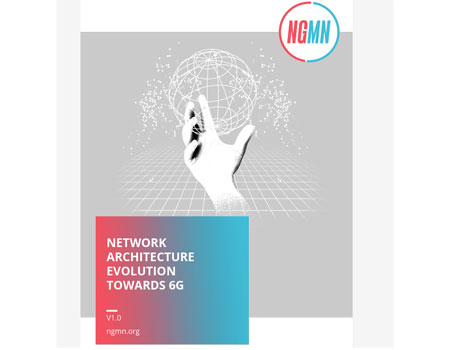3GPP meets IMT-2020
November 28, 2020
Earlier this week the ITU issued a press release to publicise the move to the approval process - by the 193 member states of the Union - of their ITU-R Recommendation: 'Detailed specifications of the radio interfaces of IMT-2020.' (ITU-R M.[IMT-2020.SPECS]).
The document - due for publication in February 2021 - will be the end product of a long process, initiated in 2012, under the banner 'IMT for 2020 and beyond' where the ITU set out its agenda for a steady progression of 5G research activities that would nourish the 3GPP efforts on the new radio and 5G core specification work.
The ITU press release formally announces the radio interfaces that conform with the International Mobile Telecommunications 2020 (IMT-2020) performance requirements:
"The technologies are: 3GPP 5G-SRIT and 3GPP 5G-RIT submitted by the Third Generation Partnership Project (3GPP), and 5Gi submitted by Telecommunications Standards Development Society India (TSDSI). During the multi-year development and evaluation process by the ITU Radiocommunication Sector (ITU-R), these technologies were deemed to be sufficiently detailed to enable worldwide compatibility of operation and equipment, including roaming."
The following material is reproduced for your information, from our September 2020 Highlights (Issue 1) newsletter article, penned by our TSG RAN Chair and the group's convenor for the ITU-R processes:
3GPP finalizes contribution for IMT-2020
September 1, 2020
By Giovanni Romano, TSG RAN ITU Ad-hoc group Convenor and Balazs Bertenyi, TSG RAN Chair.
IMT stands for International Mobile Telecommunications, the term used by the ITU to describe families of radio interface standards for mobile systems, starting from IMT-2000 (3G). The latest member of the IMT family is IMT-2020 which calls for support for enhanced mobile broadband (eMBB) and for new ‘use cases’ that require massive machine-type communications (mMTC) and ultra-reliable and low latency communications (URLLC).
The alignment between the standards for 5G and the geo-political commitment to IMT-2020 is set to allow for a coordinated timeline for technology evolution in all markets and the possibility of a global approach to spectrum planning as well as equipment production.
Since October 2014, 3GPP has been a leading participant in the ITU-R process to prepare the way for terrestrial radio interface specifications for IMT-2020. In June 2019, TSG RAN delivered a complete proposal including detailed self-evaluation documentation and a ‘Statement of compliance’ to the IMT-2020 requirements. A period of assessment then followed – by the fifteen ITU-R appointed Independent Evaluation Groups (IEGs) – up to February 2020, with no concerns being raised on the 3GPP submissions.
 The latest stage of the process – completed by June 2020 – has seen the final submission of the 3GPP set of specification material and the technology overview, to be included in the ITU-R M.[IMT-2020.SPECS] Recommendation entitled “Detailed specifications of the terrestrial radio interfaces of International Mobile Telecommunications-2020 (IMT-2020)”.
The latest stage of the process – completed by June 2020 – has seen the final submission of the 3GPP set of specification material and the technology overview, to be included in the ITU-R M.[IMT-2020.SPECS] Recommendation entitled “Detailed specifications of the terrestrial radio interfaces of International Mobile Telecommunications-2020 (IMT-2020)”.
3GPPs IMT-2020 proposal
The 3GPP “5G” final proposal includes two separate and independent submissions, defined as the single Radio Interface Technology (RIT) and the combined Sets of Radio Interface Technologies (SRIT):
Submission 1: SRIT (RP-191524)
- Component RIT: NR
- Component RIT: E-UTRA/LTE (incl. standalone LTE, NB-IoT, eMTC, and LTE-NR DC)
Submission 2: RIT (RP-191528)
- NR
Each submission is self-contained and complete unto itself, consisting of Releases 15 & 16.
The 3GPP submissions are each collectively supported by the seven 3GPP Organizational Partners (Standards bodies; ARIB, ATIS, CCSA, ETSI, TSDSI, TTA and TTC) following their approval of the following:
- An overview of the main radio characteristics (RP-191523).
- The Compliance Template, a self-assessment on the fulfilment of the IMT-2020 requirements.
- The Link Budget Template, providing useful information on cell radius and network planning.
- TR 37.910, providing an exhaustive analysis of 3GPP “5G”, including simulation assumptions and results performed in the self-assessment.

3GPP aspects included in IMT-2020
Based on both 3GPP Submissions, the 3GPP aspects to be included in IMT-2020, spanning Release 15 & 16, are organised as follows:
- Overview of the radio interface technology – This Section describes the main radio characteristics. For the SRIT it describes both NR and LTE, including NB-IoT, eMTC and LTE-NR DC, while for the NR RIT focuses on the NR radio aspects.
- Detailed specifications of the radio interface technology – This Section provides the list of the 3GPP specifications to be included as ‘Global Core Specifications’ and to be transposed by the 3GPP OPs as authorised Transposing Organizations. Per each specification, the title and a short synopsis is provided. The specifications are taken from:
- SRIT: series 36 (“LTE (Evolved UTRA), LTE-Advanced, LTE-Advanced Pro radio technology”), 37 (“Multiple radio access technology aspects”) and 38 (“Radio technology beyond LTE”)
- RIT: series 37 (“Multiple radio access technology aspects”) and 38 (“Radio technology beyond LTE”)
Taking 5G to the core
Although the focus of Recommendation ITU-R M.[IMT-2020.SPECS] is only on radio interfaces fulfilling IMT-2020 radio requirements - Information on backhauling, core network and service aspects is referenced in the 3GPP submissions, with a link to the 3GPP specifications web page provided, to give a complete system perspective.
The importance of system and core network specifications cannot be overstressed, as they address the network, terminal, and service aspects required to provide an integrated mobility solution. In addition to the radio work submitted for IMT-2020, the broader 3GPP system includes aspects such as user services, connectivity, interoperability, mobility and roaming, security, codecs and media, operations and maintenance, charging.
More to do
The process for the finalization of Recommendation ITU-R M.[IMT-2020.SPECS] is now approaching its conclusion (Nov. 28: See story above). The 3GPP contribution to the document is paramount to its success and is a monument to the good co-operation between the ITU-R and 3GPP for more than two decades.
In the future, following the ITU-R process, 3GPP will provide updates - containing details of new features specified in Release 17 and beyond - to be included in revisions of the Recommendation.
|
Author’s footnote The completion of the submission was done thanks to the contribution of the 3GPP delegates and companies. Special thanks to: Wu Yong and Asbjörn Grövlen, Rapporteurs for the self-evaluation Study Item; Riikka Susitaival - main editor for the preparation of the final material for inclusion in M.[IMT-2020.SPECS], along with David Mazzarese, Francesco Pica, Meng Xi and many other colleagues – you know who you are! |
Further Reading:
- Recommendation ITU-R M.2150-0 (02/2021): Detailed specifications of the terrestrial radio interfaces of International Mobile Telecommunications-2020 (IMT-2020)
- 3GPP Highlights Issue 02 (Page 10): FROM IMT-2020 TO BEYOND, An interview with Sergio Buonomo, Chief, ITU-R Study Groups Department
Contact for this article: Kevin FLYNN, Marketing and Communications Officer, 3GPP


 3GPP News
3GPP News




